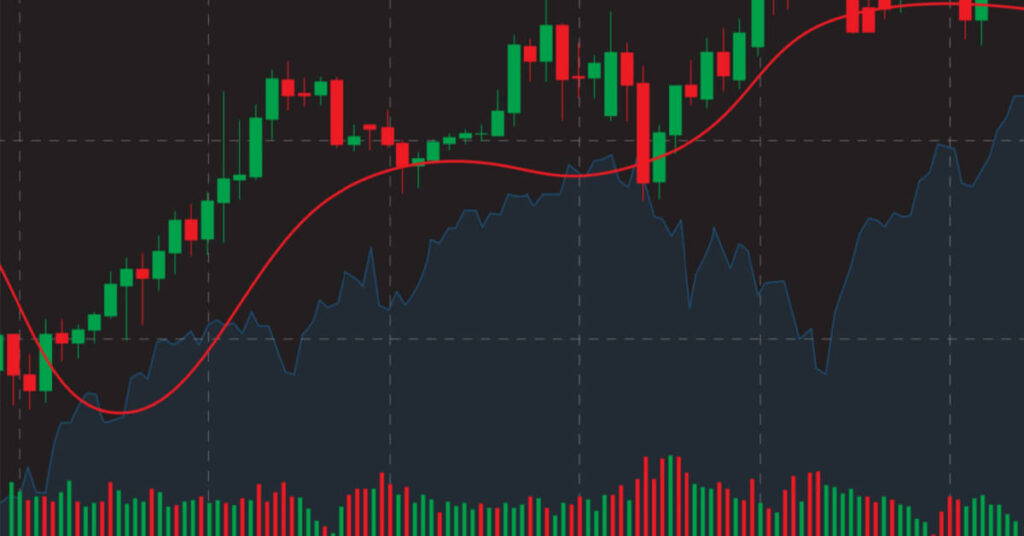
How To Use A Moving Average To Buy Crypto
Moving averages are a tool that can help you make informed investment decisions, particularly during turbulent market periods.
As the crypto market continues to fluctuate, alongside the rest of the global financial market, you may be wondering how you can identify the best time to buy or sell your crypto.
Investing is an age-old practice and there are thousands of techniques you can use, one of which is moving averages, also known as MA.
In this article, we’ll explain what a moving average is, how to use them to buy crypto and its benefits and limitations as an analytical method.
What is a moving average?
The moving average is a technical indicator that averages the price points of an asset over a period of time to produce a constantly updated average price. The purpose of the moving average is to help traders and investors filter out short-term price movements, and smooth out price trends, in order to make informed decisions.
This average can be gathered over any set time period to help with buy and sell decisions. Some of the most commonly used moving average lengths are: 20 days, 50 days, 100 days and 200 days.
Types of moving average
As well as various lengths of moving averages, there are also different types of moving averages you can use.
The first, and most common, type is the simple moving average (SMA). If your chosen period of time is 20 days, you would calculate the SMA by adding up the 20 most recently daily closing prices of your chosen crypto, including the current day, and dividing that number by 20 to get the average value.
The second type of moving average is exponential moving average (EMA). This method is slightly harder to calculate because it gives a greater weighting to more recent prices within a period. For that reason, the EMA is more reactive to price movements than the SMA.
Luckily, it’s unlikely that you’ll need to calculate the moving average yourself because there are plenty of resources you can use to create the graphs for you.
Bitcoin’s 200-week moving average shows a consistent long-term uptrend (lookintobitcoin.com).
How to use moving averages to buy crypto
To use moving averages to buy bitcoin, for example, you should start by deciding what your objectives are with purchasing crypto, because the time period you choose, called the “look back period”, will play a key role in how useful the technique will be to you.
If you’re a short-term trader, a 20-day moving average will be most beneficial for showing you smaller price movements with less lag – lag is the amount of time it takes for a moving average to signal a potential price reversal. On the other hand, long-term investors may find the 200-day moving average more useful for showing longer-term price trends.
Once you’ve decided on that, there are three valuable insights that you can get from moving averages to decide when you should buy crypto:
Slopes
The simplest way of interpreting a moving average chart is to look at the direction that it slopes to identify a trend. If a moving average is sloping downwards, the asset is most likely in a downtrend. If it’s sloping upwards, this indicates an uptrend.
Support and resistance
When the market is trending downwards, the moving average works as resistance, which the price will hit before it drops downwards again. In an uptrend, the moving average acts as a support level, otherwise called a “floor”, and the prices will typically bounce upwards off of it.
Crosses
A popular trading signal is a moving average cross, which can be used when you have two or more moving averages on a chart, usually one short-term (such as 20-day) and one long-term (such as 200-day).
When a short-term moving average crosses through a long-term moving average in a downward motion, this is a strong indicator that a bear market is imminent. The opposite is true when a long-term moving average crosses through a short-term one in an upward motion, meaning that a bull market is likely imminent.

Moving averages can help you identify the price trends of an asset, such as when it’s likely entering a bull market.
Benefits of moving averages
Why are moving averages considered a useful technique for crypto traders and investors?
- A moving average reduces the noise on a price chart and focuses attention on which direction the price is moving, so you can make informed purchase decisions.
- Moving averages can also help you spot upcoming changes in the market before they happen by helping you to identify price trends.
Limitations of moving averages
Although it’s a largely useful technique, it’s not without its drawbacks. Limitations to bear in mind are:
- The indicator can produce lag, particularly when you’re looking at a long-term moving average, so it’s important to choose the right time frame based on your objectives.
- Moving averages look at the price of an asset in isolation. They don’t factor in other factors that may have impacted price turns, such as regulatory policies or economic crises, so you’ll need to look at them in conjunction with other research.
Moving averages for crypto success
While past performance is no guarantee of future success in the markets, historically speaking, when the Bitcoin price has fallen below the 200-day SMA has proven time and again to be a great time to buy crypto for long-term investors,
As always, this article does not constitute financial advice and you should be sure to do your own research and consult a professional financial advisor before making any investment decision.
To stay up to date on all things crypto, like Xcoins on Facebook, follow us on Twitter, Instagram, LinkedIn, and sign up at the bottom of the page to subscribe.

